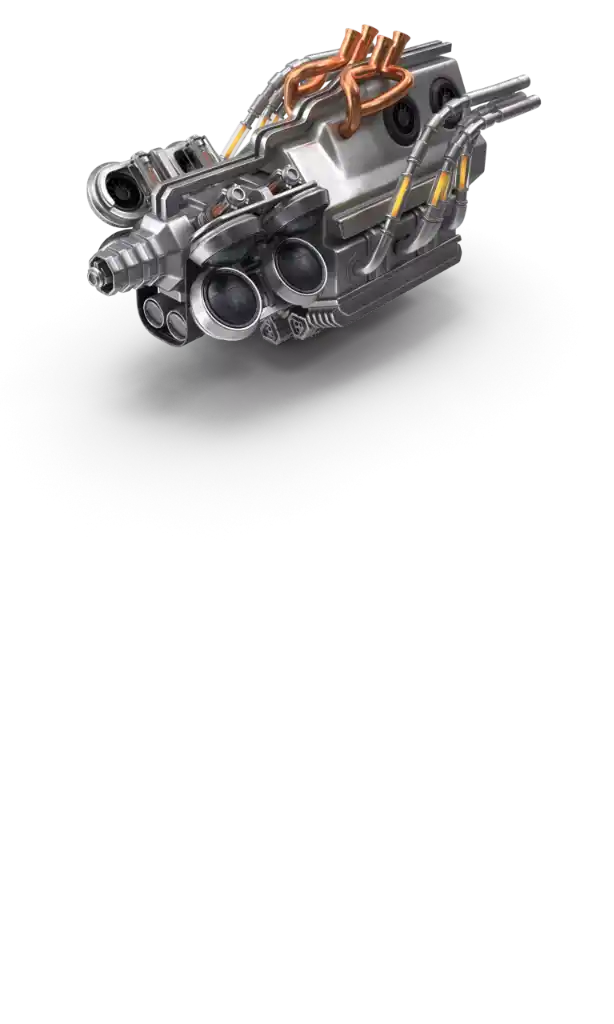Innovation Alphabet
VRIO Framework
in a nutshell
The VRIO framework is an internal analysis tool that helps companies understand which resources can provide them with a long-term competitive advantage. It works just like a simple algorithm: the evaluation of a resource proceeds through four consecutive criteria, which may or may not be met.


Criteria
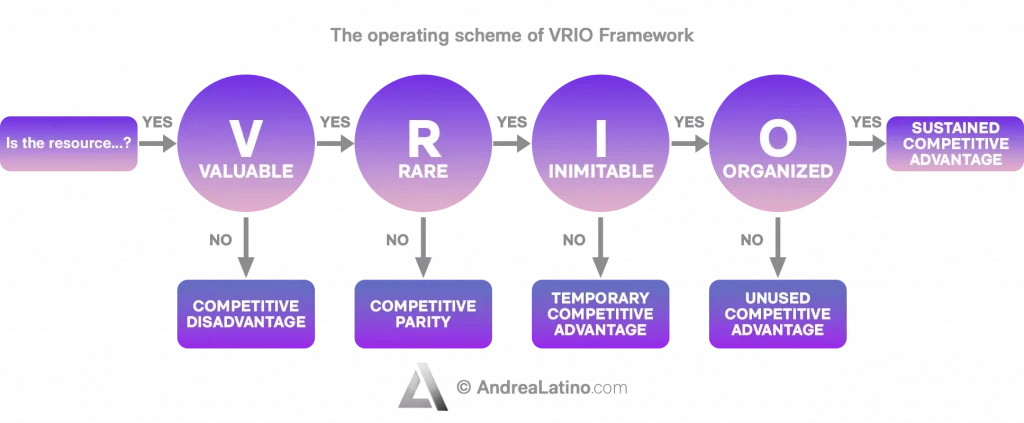
VRIO is an acronym. Each letter corresponds to one of the aspects by which to judge the worthiness of a resource. Therefore, to ensure competitive advantage, resources must meet some basic characteristics.
Value: A resource is valuable if it adds value to the company. It enables the company to exploit opportunities and ward off threats.
Rarity: A resource is rare if most competitors do not have access to it. It may be hard to find in the market, or it may be of exclusive and company-specific use.
Imitability: Consider costs, trademarks, and patents. If a resource is expensive or protected by a patent, then it will be difficult to imitate, which is good for those who have it.
Organization: If the research has passed the previous levels, shift the focus to the activity. In order to make good use of the analyzed resource, you need an organization that enables it and captures its potential.
Application Fields
• Production: A periodic VRIO analysis will judge the company’s resources and capabilities in relation to changing markets, customers, and conditions. From the information gathered, it is possible to prioritize certain production processes over others that are momentarily less fruitful.
• Marketing. The concept of rarity comes into play here. In marketing it is linked to various techniques, such as FOMO (Fear Of Missing Out), or the so-called scarcity effect. If the service offered by a company is valued even seemingly rare, it can be exploited to enhance the marketing strategy.
• R&D. Once the potential of the resources available to a company is understood, the Research & Development department moves in to investigate a possible technological innovation to improve products or production processes that do not provide competitive advantages.
Do you have a Operations & Human Resources challenge to tackle? Let’s face it. Together.
C-levels from these companies (AND MORE) relied on my expertise to overcome thEIR CHALLENGES IN THIS AREA. And You can, too.
Can I help you?Industries
• VRIO Framework in the retail industry
According to a VRIO analysis conducted on Starbucks, the U.S. coffee chain enjoys a number of competitive advantages: from the perspective of global presence, a Sustainable Competitive Advantage. For the wide variety of products offered, a Realized Competitive Parity. For the atmosphere and experience enjoyed by customers, a Realized Temporary Competitive Advantage.
• VRIO Framework in the entertainment industry
The very popular Chinese app TikTok has more than 10 million monthly users in Italy alone. We can look at its situation under the magnifying glass of the VRIO Framework: among the aspects that give it value is definitely the number of users. Unlike other platforms such as, for example, YouTube, it offers a simpler experience of immediate interaction – a feature that is difficult to imitate. In short, competitors are chasing, and they have many yards to spare.
• VRIO Framework in the technology industry
Samsung, a Korean multinational electronics company founded in 1969, now trades in very different products: smart TVs, cell phones, home appliances, and so on. The Samsung Galaxy series of smartphones has enjoyed great success for a long time, as it boasts ease of use (value), differentiated user experience and customizability (rarity), brand image (imitability) and, among the company’s different design teams, active competition (organization).
Business functions
• VRIO Framework in support of HR
Analyzing Google through the VRIO Framework, the Internet giant’s ability to effectively manage its employees is a source of differentiation and benefit in terms of cost. Starting with data from its loyal employees, the company can make decisions based on objective information about which people to hire and how best to use their skills.
• VRIO Experience in support of user experience
Among the various products made by Apple are iPhones: nearly 50 million were sold in the second quarter of 2021 alone. Among the values of the device are design and ease of use. Rarities include the globality of the services it can offer. As an inimitable feature, of course, Brand Identity, since the iPhone now represents a status symbol. Last but not least, Apple’s organization is based on charismatic leadership.
• VRIO Framework in support of brand image
Visionary Elon Musk’s young car manufacturer Tesla can be analyzed from different perspectives following the VRIO Framework. Limiting ourselves to brand image, we can say that it meets all four of the analyzed criteria. In the electric car industry, Tesla has a significant competitive advantage.
Stay in wonderland
Let me show you how deep the rabbit hole goes.
Check out more of the Innovation Alphabet:
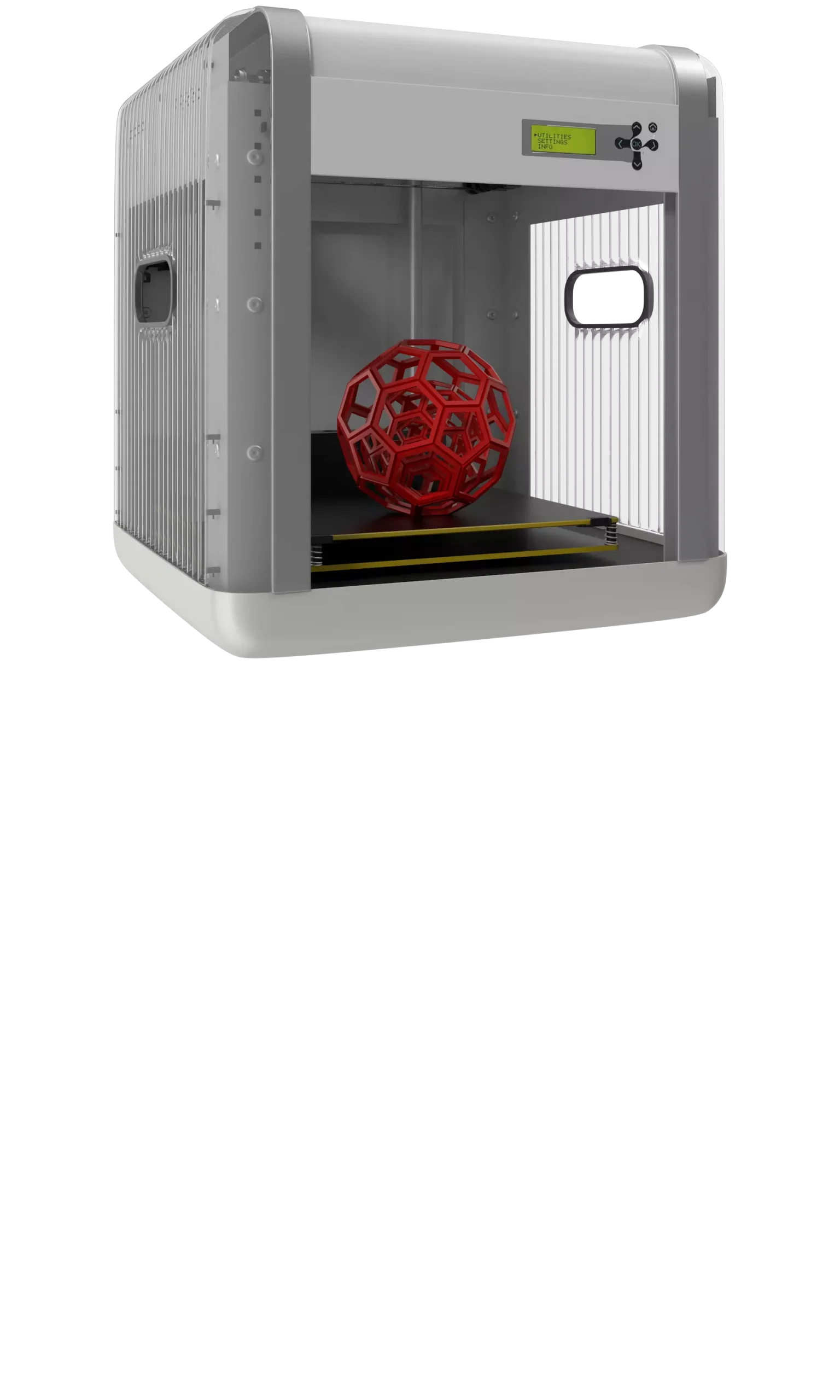
3D Printing
3D Printing
“3D printing” is a process carried out by an electronic device which, instead of resorting to the canonical ink, it molds almost any kind of material: from concrete to living tissue, most usually plastic, but also metal. And the operating principle is similar to that of a traditional printer. The creation of three-dimensional models can lead to the redesign of a company’s production capabilities.
Dive In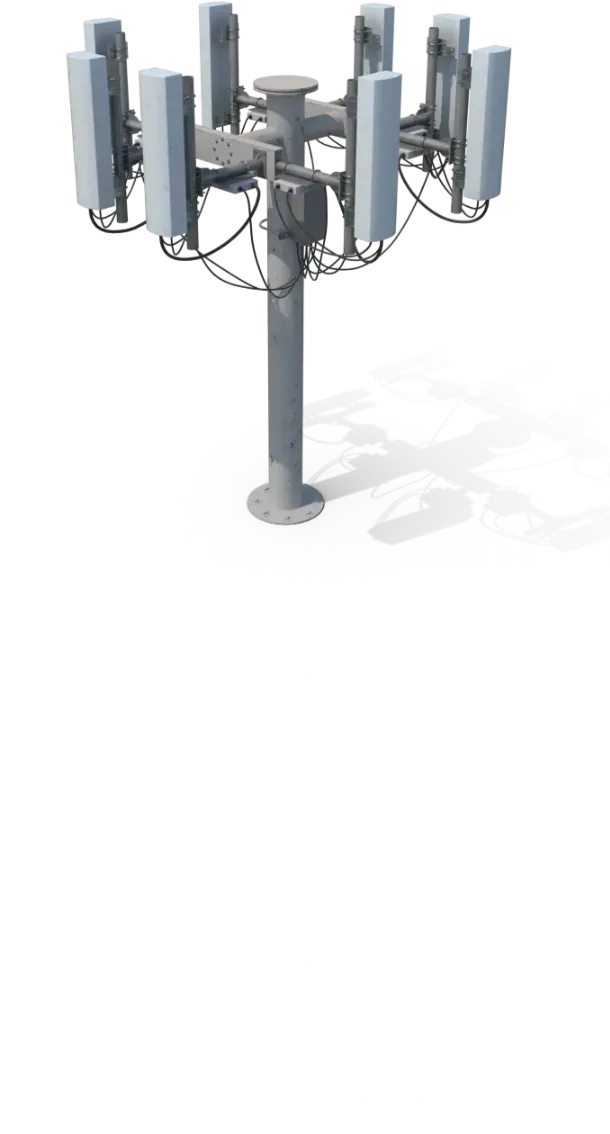
5G
5G
5G is the new frontier of cellular telephony. It was designed to improve (or completely replace) previous generations of mobile networks. The 5th generation features lower latency, ensuring flawless performance of business applications and many other digital experiences – thus enabling the new cultural generations to furiously play Fortnite away from home.
Dive In
Advanced Analytics
Advanced Analytics
The term “Advanced Analytics” refers to the ability to autonomously or semi-autonomously analyze data and content to identify correlations, develop analyses, predictions, and recommendations. It is not just a matter of collecting information and then organizing it into watertight compartments: the ultimate goal is to identify a dialogue pattern from a data-driven perspective.
Dive In
Agile
Agile
Agile is an approach to software development designed to respond to change. Teams quickly analyze the context in which they operate, identify uncertainties faced, and figure out how to adapt to always move forward. Interaction between individuals comes before processes and tools; collaboration with the customer is more important than negotiating contracts.
Dive In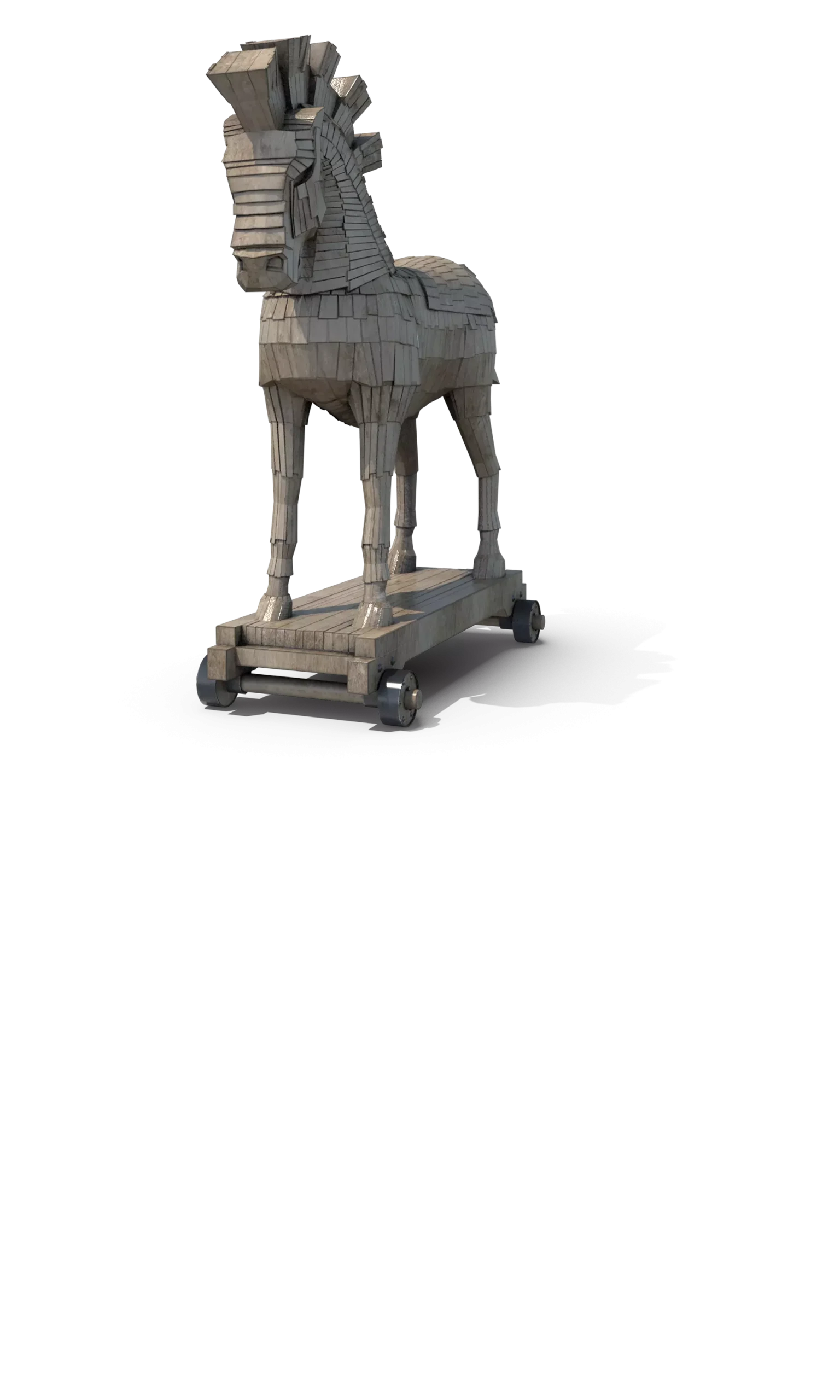
Ansoff Matrix
Ansoff Matrix
The Ansoff Matrix is a marketing planning model that arises from the intersection of new and existing products and markets. It derives four possible strategies for expanding the company’s market, which are built around four variables with a changeable factor of risks and possibilities: existing product, new product, existing market, new market.
Dive In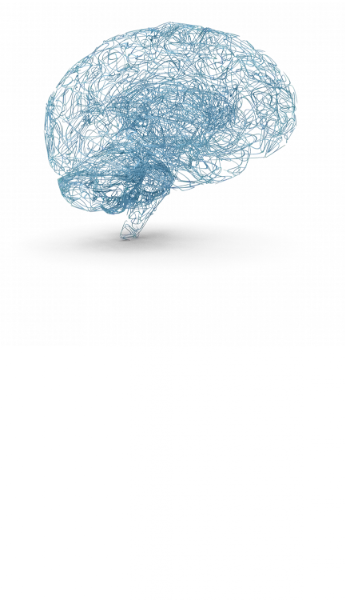
Artificial Intelligence
Artificial Intelligence
Artificial Intelligence is not strictly defined. Basically, it is a computer system able to make decisions in an independent and flexible way. A good AI application can perform everyday tasks better than an average person (e.g., identifying other people from their photos on social media or beating the best chess player). Nothing to fear, then. Unless you are a chess champion.
Dive In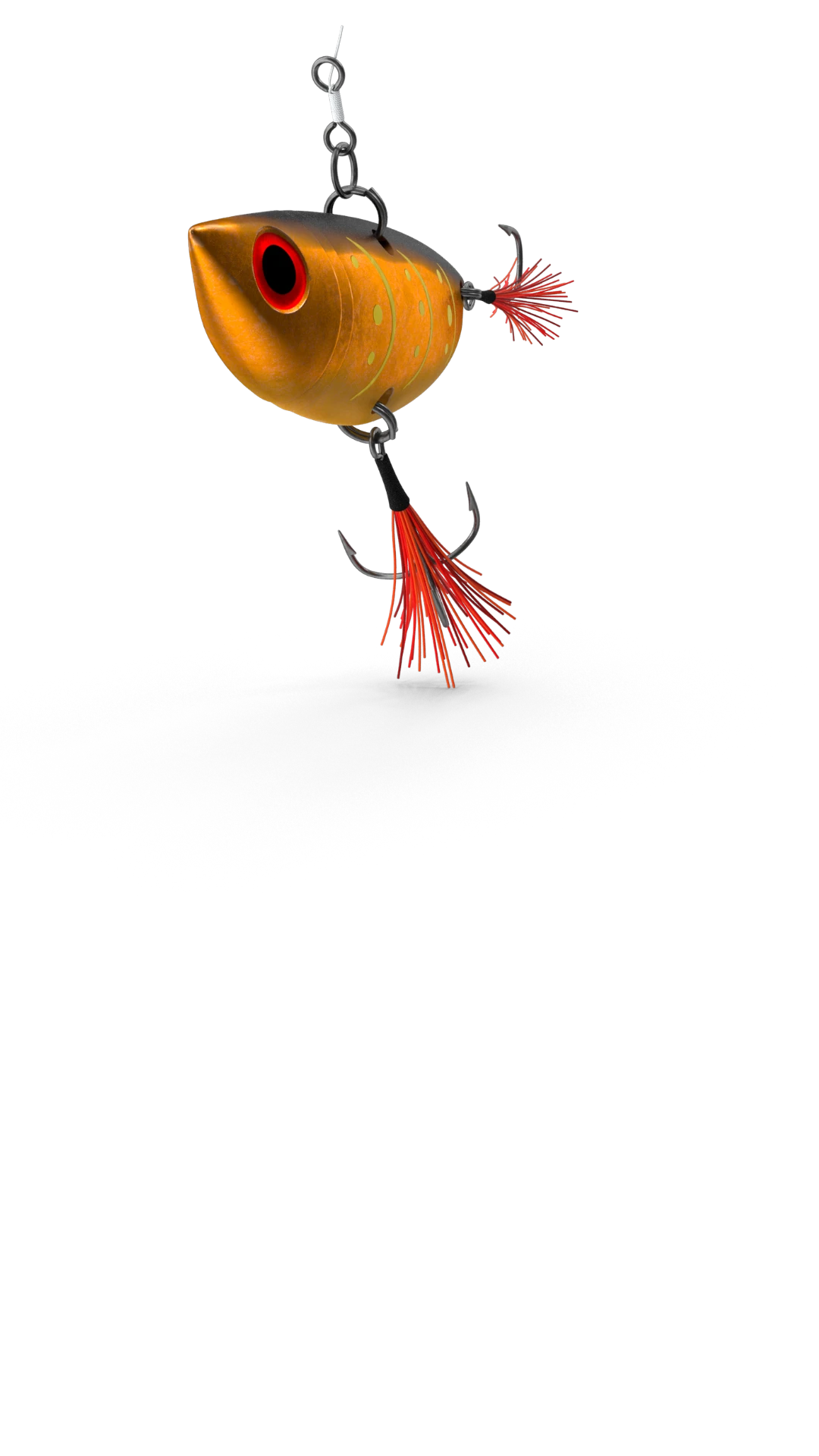
Artificial Scarcity
Artificial Scarcity
We often tend to desire what we cannot have. Or what we are in danger of losing: Artificial Scarcity is a strategy that flaunts a limited number of items that do not correspond to actual availability. The goal is to stimulate the perception in consumers that the stock of items is about to run out and thus create a need based on the “fear of being cut off” or the intention to buy the item in order to resell it at a higher price.
Dive In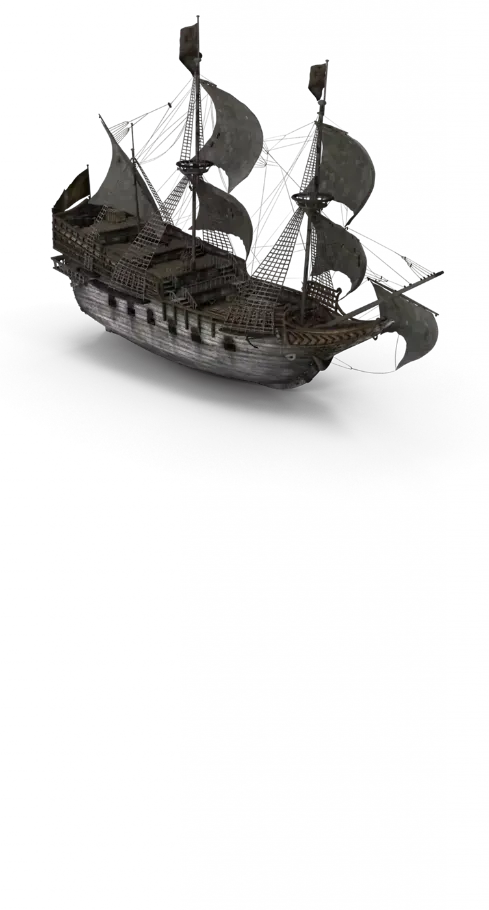
Attack Surface
Attack Surface
The term attack surface refers to the part of a system that may be subject to attack or breach by hackers. The smaller that surface is, the easier it will be to protect it. Indeed, the Internet is an ocean of deep, dark waters: those who navigate it must be aware that they are exposing themselves to a flood of digital risks. Yet, ironically, we do not need a big boat to shelter us.
Dive In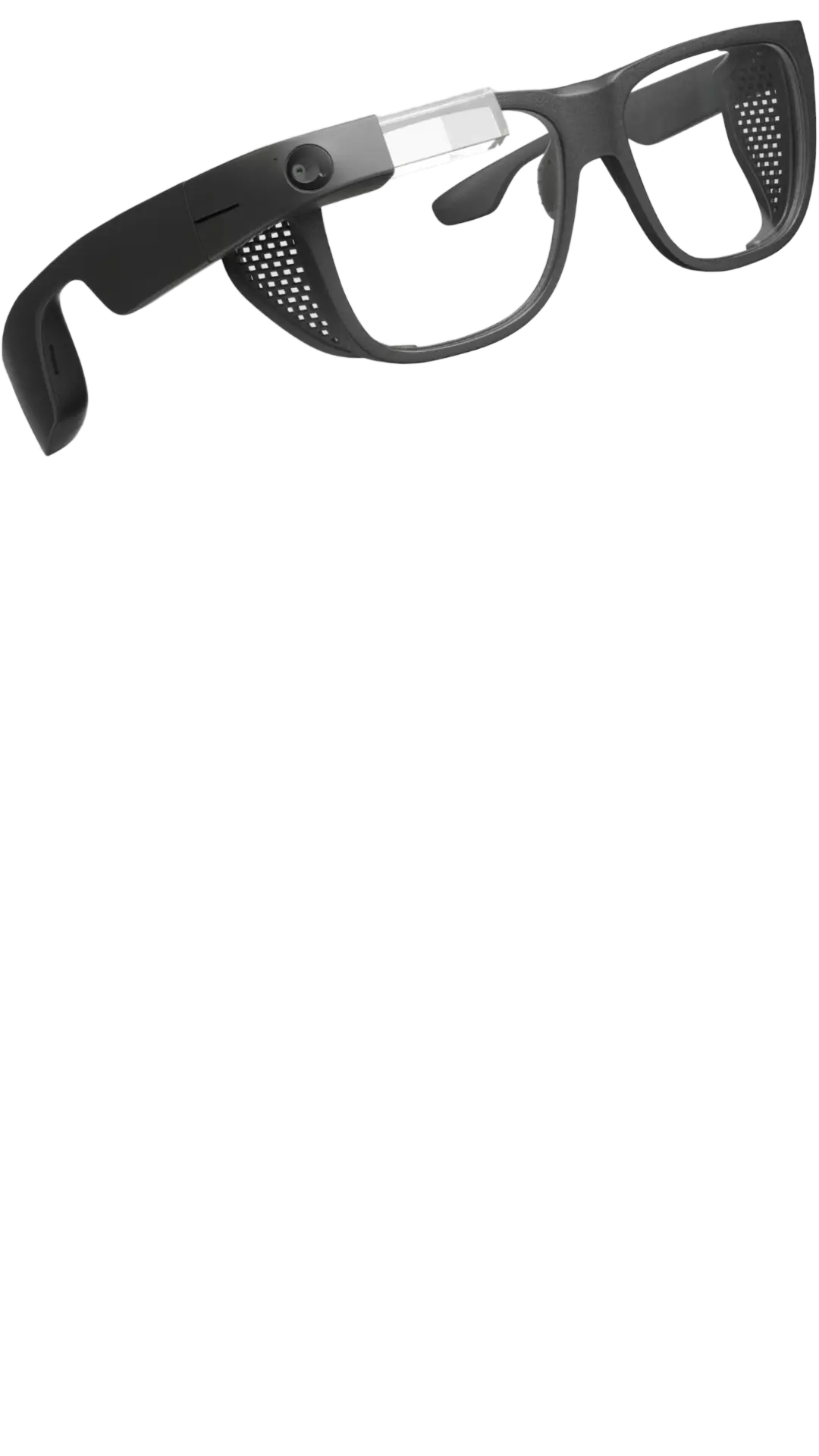
Augmented Reality
Augmented Reality
Augmented Reality is an ever-evolving technology that overlays multimedia information on top of our common sensory horizon to gain a deeper understanding of our surroundings. No, it doesn’t allow you to step out of the Matrix dream simulation, nor can it be accessed by swallowing a red pill. But neither is it the disturbing experience of the Playtest episode of Black Mirror.
Dive In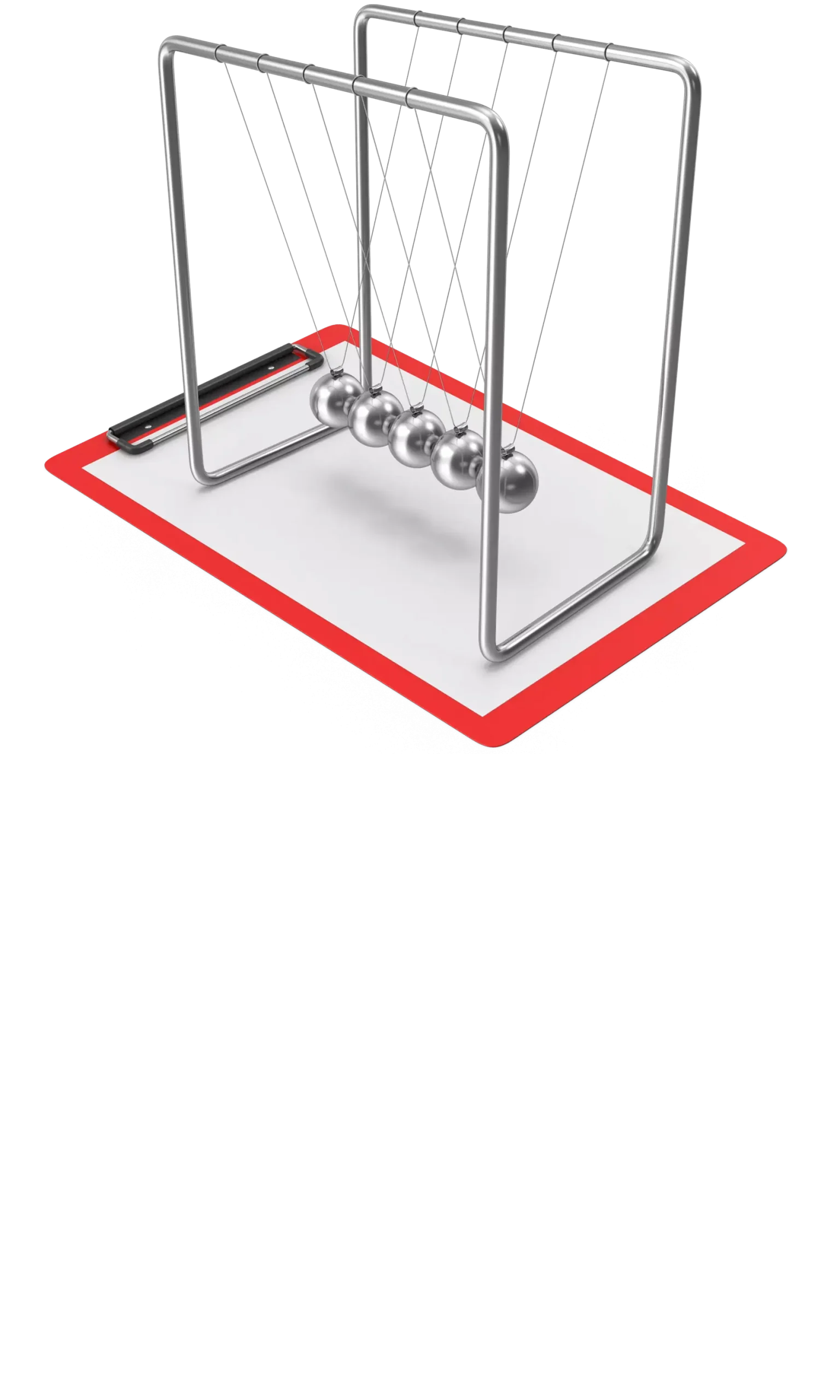
Balanced Scorecard
Balanced Scorecard
In business, as in life, you need balance. The Balanced Scorecard is a holistic tool for strategic management. It offers, in fact, the possibility of assessing corporate performance in its wholeness. An overview that embraces four perspectives: the business/financial side, customers and stakeholders, internal processes, and learning and growth.
Dive In